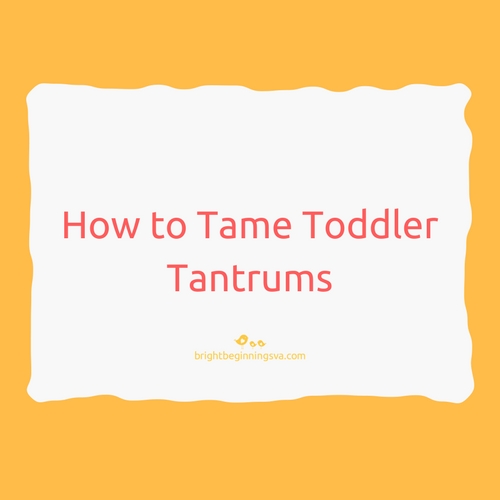5 Ways to Tame a Toddler Tantrum
5 Ways to Tame a Toddler Tantrum

Toddlers can be sweet, loving, funny little humans. On the flipside, when they are having a hard time being understood, they can seem unreasonable and downright difficult. These little ones can be happy one moment and fly off the handle the next. What’s a parent to do? Relax. It’s necessary you recognize that tantrums are a normal part of child development. And, all children have them. While the end goal is to have your child develop coping strategies that calm them down when they get upset without your help; it can take lots of time and lots of practice (and patience)! Read on to learn how to tame a toddler tantrum.
Acknowledge Their Feelings
This can be really difficult when your toddler is screaming and crying. But, try your best to interject words of affirmation. Use statements like, “I see you’re upset” or “It’s ok to be sad.” Believe it or not, but your child will see and hear your efforts. And, this can show them that they matter, their feelings matter, and they aren’t being dismissed. Eventually, your child will accept your words, internalize them, and be able to rationalize in a conversation with you until they can calm down.Don’t Scream, Don’t Cry, Don’t Punish
Screaming, crying, and punishing on your end will only make things worse. Do whatever you need to in order to remain calm. You are the adult, you are in charge. Leave the room to collect yourself, take deep breaths, or sing a song in your head to stop you from losing control and feed into the negative attention your child is trying to get at the moment.Let Them Work it Out
The only way your child is going to learn coping strategies is by working out their tantrum on their own. You can certainly acknowledge their feelings, but you aren’t going to be able to have a reasonable conversation with them if they’re in the middle of a meltdown. Remove any items that could serve them harm, and physically leave the room. This will show them you’re not going to pay their negative behavior any attention and they are able to have an outlet to how they are feeling without being stopped. Some kids simply need that output until they learn how to process their intense anger or sadness.Be Consistent With Sleep and Feeding Schedules
Many times, tantrums occur because your child is extra irritable due to the need for sleep, or something to eat or drink. You can help tame tantrums by keeping them from starting. Be consistent when you serve breakfast, offer a snack in between meals, and do not let your toddler skip their nap. Kids are creatures of habit and crave a routine. When you remove just one part of that routine, it could be a recipe for disaster.Scope Out Cues
Another way to tame tantrums is to read your child’s cues. Are they getting whiny and squirmy at the store? Are they acting grumpy when others wave to them? Does the sight of the candy aisle set them into meltdown mode? It’s key to figure out their triggers. And, avoid them at all costs! This may inconvenience you at times, but if you want to avoid a tantrum, be aware of everything in your surrounding environment-especially the way your child is acting before a meltdown.
Parenting can be hard sometimes. And, tantrums can make your job a lot harder. Remember that every child has tantrums. Consider some of the tips above to ensure you do everything you can to keep tantrums at bay, short, and in control.




